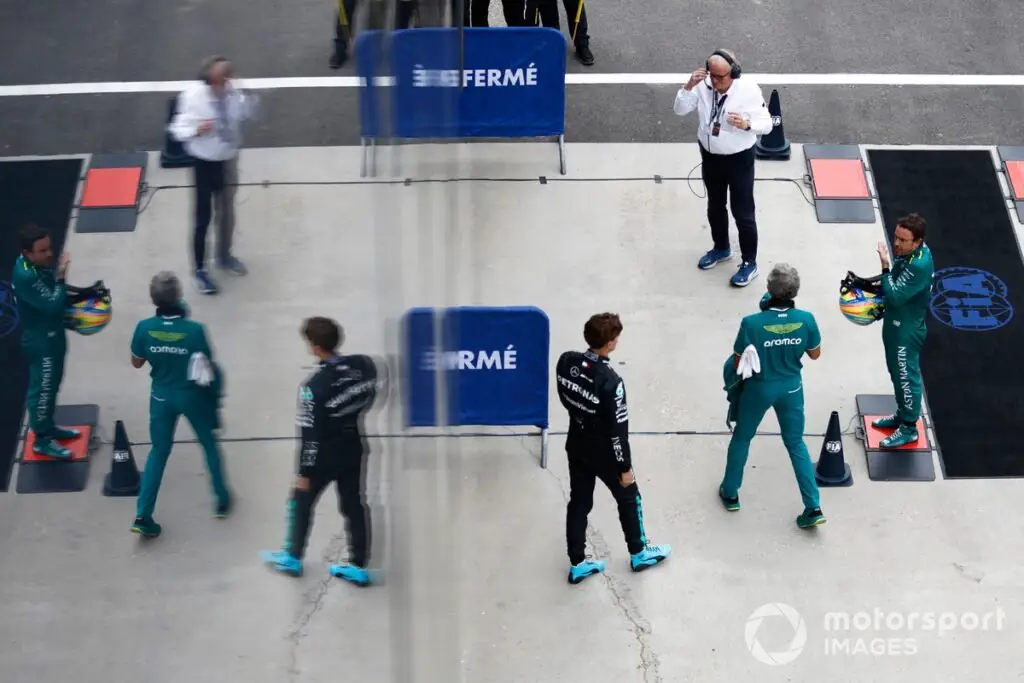Post-Race Weighing in Formula 1: A Vital Aspect of FIA Protocol
In the high-stakes world of Formula 1, even the smallest details matter significantly. One such detail is a seemingly innocuous piece of paper – the post-race weigh slip. After every race, drivers are required to step onto scales, ensuring they meet the minimum weight requirements set by the FIA.
Ensuring Compliance with Technical Regulations
This post-race weighing is an essential part of the FIA’s protocol, serving as a determinant for a team’s compliance with technical regulations. Since 2019, drivers must weigh at least 80 kilograms while wearing their racing suit, gloves, helmet, shoes, and HANS device. If a driver falls short, the team is obligated to add ballast to the cockpit because a driver’s weight contributes to the car’s total minimum weight.
In 2025, the combined minimum weight will be set at 798kg. However, for the 2026 season, the car minimum will drop to 768kg, while the required minimum for drivers will increase to 82kg. Every gram counts in Formula 1, where races can be won by a tenth of a second. Teams must account for potential weight loss during the race, especially under extreme conditions like the Qatar Grand Prix’s searing heat, where drivers could lose 2 to 3 kilograms through sweat alone. Yet, the minimum weight rule remains in effect after crossing the checkered flag.
A Health Monitor and Recovery Tool
The post-race weighing serves a dual purpose: it ensures compliance with regulations, but also acts as a health monitor, providing teams and physiotherapists with valuable insights into a driver’s hydration levels and nutritional needs. After stepping off the scales, each driver receives a small receipt detailing their weight to the decimal point. This slip serves as proof in case of disputes or re-weighing requests.
However, there’s no set procedure for what happens to this weigh slip after it’s handed to the driver. More often than not, it ends up with the driver’s physiotherapist. Since physios aren’t present during the weigh-in itself, this slip becomes a crucial data point in developing a post-race recovery plan, taking into account hydration levels and nutritional requirements.







